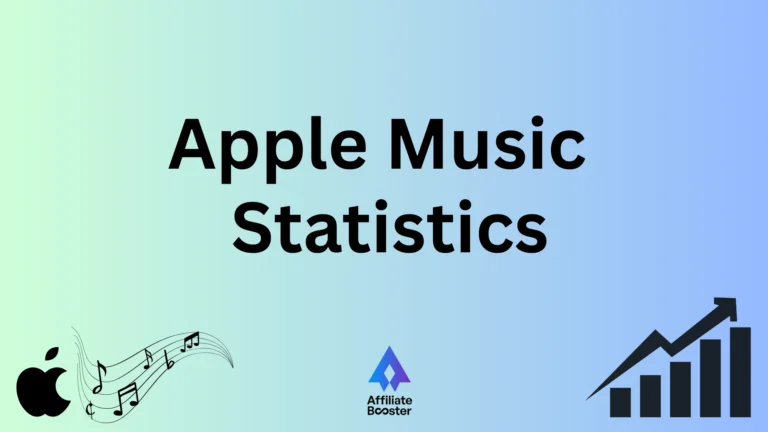The world of cryptocurrency is vast and constantly expanding. If you’re asking about the total number of cryptocurrencies in 2025, the answer is more complex than you might think.
On one hand, millions of digital tokens have been created. On the other hand, only a fraction of them are active or hold any real value.
This ultimate guide will break down everything you need to know. We will explore the massive number of tokens that exist, how many are actually relevant, why so many are being created, and what the future holds for this explosive market.
Here are the little quick facts about Cryptocurrencies:
- Over 37 million cryptos exist, but only about 17,000 are actively traded.
- Bitcoin and Ethereum together control nearly 75% of the entire crypto market.
- The total crypto market is worth $2.96 trillion, with Bitcoin's price now over $105,000.
- More than half of all cryptocurrencies ever launched have already failed.
- Crypto ownership has surged, with 28% of U.S. adults now holding digital assets.
Number of Cryptocurrencies Statistics & Facts 2025
- The Massive Number: Over 37 million unique cryptocurrencies have been created as of July 2025.
- The Active Number: Despite the huge number, only around 17,151 cryptocurrencies are actively tracked on major platforms like CoinGecko.
- Market Dominance: Bitcoin (BTC) and Ethereum (ETH) together make up nearly 75% of the entire crypto market value.
- Global Market Cap: The total value of all cryptocurrencies stands at $2.96 trillion in 2025.
- Bitcoin’s New High: The price of a single Bitcoin is now over $105,000.
- High Failure Rate: More than 50% of all cryptocurrencies ever created have failed or become “dead coins.”
- Active Exchanges: 217 active cryptocurrency exchanges are operating globally.
- Crypto Ownership: In the U.S., 28% of adults (around 65 million people) now own cryptocurrency, a number that has almost doubled since 2021.
What Is the Total Number of Cryptocurrencies Today?
When we talk about the total number of cryptocurrencies, we need to look at two different figures: the number of tokens ever created versus the number of active, meaningful projects.
1. The 37 Million+ Figure: The Entire Universe of Tokens
As of 2025, data shows that over 37 million unique tokens have been launched. This staggering number is possible because modern blockchains, especially Solana, have made it incredibly easy and cheap to create a new token. Platforms like pump.fun allow anyone to launch a new memecoin in minutes for just a few dollars.
A huge percentage of these tokens are:
- Memecoins: Created as jokes or for quick speculation.
- Scams: Designed to quickly take investors' money (known as “rug pulls”).
- Abandoned Projects: Ideas that never gained traction and were left behind by their developers.
The Solana blockchain alone accounts for roughly 70% of all tokens ever created. This oversaturation means that while the technical number of cryptos is in the millions, most have no utility, no community, and virtually no trading volume.
2. The 17,000+ Figure: The Active and Tracked Coins
For a more practical answer, we look at crypto-tracking websites like CoinGecko and CoinMarketCap. These platforms list cryptocurrencies that meet certain criteria, such as having an active trading volume on an exchange and a functioning website or project behind them.
As of 2025, these platforms track around 17,151 active cryptocurrencies. This is the number that most investors and analysts refer to when discussing the market. While still a huge number, it filters out the millions of dead or worthless tokens, giving a much more realistic view of the landscape.
Why Is the Cryptocurrency Market Expanding So Fast?
The explosion in the number of digital coins didn't happen overnight. In 2013, there were fewer than 500. So, what caused this incredible growth?
Ease of Creation: In the past, creating a new cryptocurrency required deep technical knowledge. Today, platforms like Ethereum (with its ERC-20 standard) and Solana (with its SPL tokens) provide a simple framework.
You no longer need to build a blockchain from scratch; you can just launch a token on an existing one.
Diverse Use Cases: Crypto is no longer just about digital money. Tokens now represent ownership in a huge variety of projects, including:
- DeFi (Decentralized Finance): For lending, borrowing, and trading without banks.
- Gaming & Metaverse: In-game currency or virtual land.
- NFTs (Non-Fungible Tokens): Representing ownership of digital art or collectibles.
- Governance: Giving holders voting rights in a project's future.
Speculation and Hype: The potential for massive returns has attracted millions of investors. This high demand for the “next Bitcoin” encourages developers to launch new projects, hoping to capture a piece of the market.
This has led to the memecoin craze, where tokens with no utility can gain billions in value based purely on hype.
What the Crypto Market Looks Like in 2025?
Understanding the total number of cryptocurrencies is only part of the story. The market's size and the platforms where they are traded are just as important.
Global Cryptocurrency Market Size
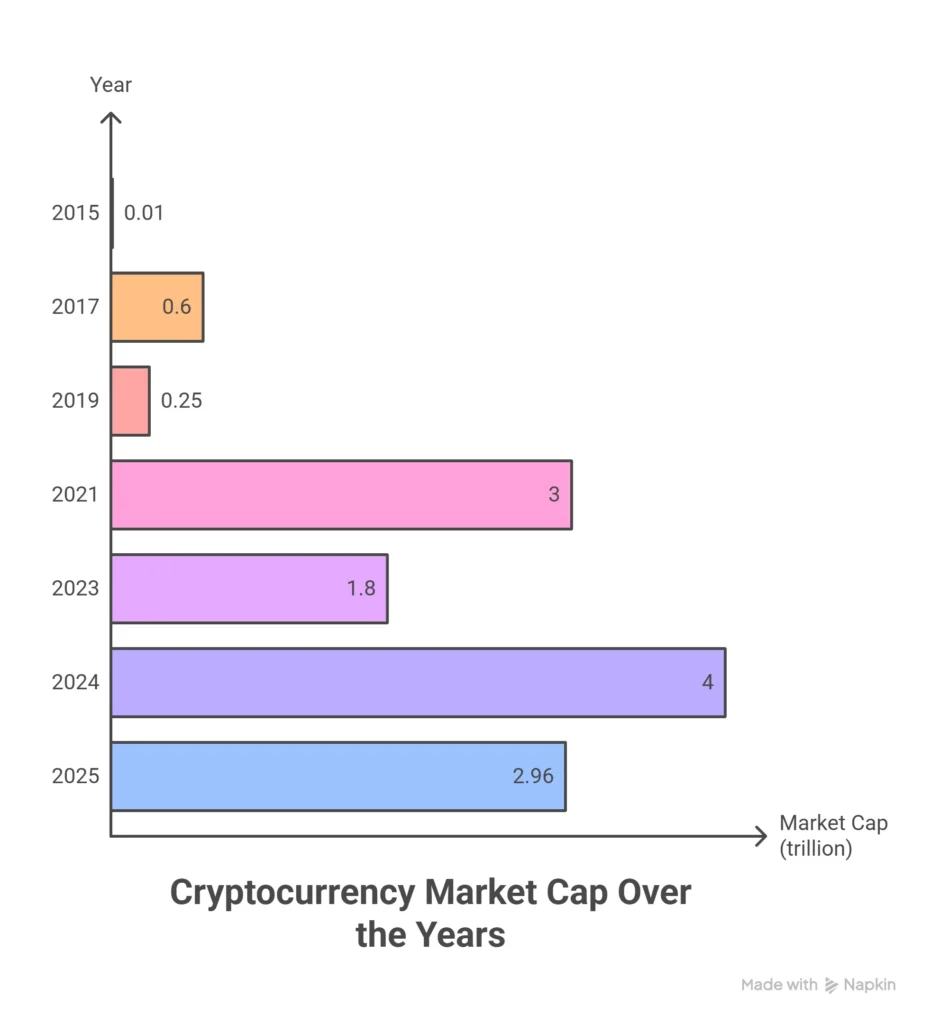
The crypto market is famous for its volatility. It has seen incredible highs and devastating lows. As of 2025, the global market cap is $2.96 trillion. This is down from its all-time high of around $4 trillion in late 2024, but still represents massive growth over the last decade.
Here is a look at how the market cap has grown over the years:
| Year | Approximate Cryptocurrency Market Cap |
| 2015 | <$10 billion |
| 2017 | ~$600 billion (Peak) |
| 2019 | ~$250 billion |
| 2021 | ~$3 trillion (Peak) |
| 2023 | ~$1.8 trillion |
| 2024 | ~$4 trillion (Peak) |
| 2025 | ~$2.96 trillion (Current) |
Top Cryptocurrency Exchanges
With thousands of coins available, exchanges are the gateways for buying and selling them. In 2025, there are 217 exchanges worldwide. Interestingly, there has been a major shift in dominance.
Here are the top 10 exchanges by 24-hour trading volume:
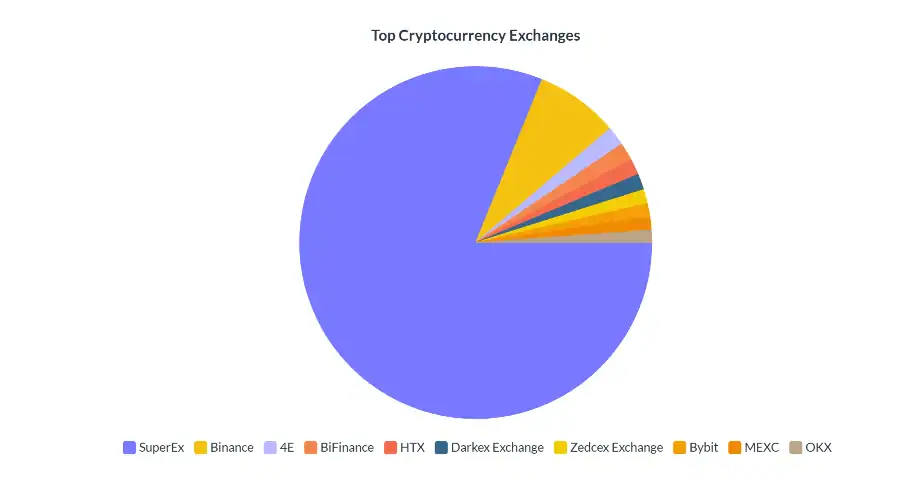
| Exchange | 24h Trading Volume (in Billion USD) |
| SuperEx | 163.61 |
| Binance | 15.41 |
| 4E | 3.52 |
| BiFinance | 3.32 |
| HTX | 2.99 |
| Darkex Exchange | 2.95 |
| Zedcex Exchange | 2.59 |
| Bybit | 2.47 |
| MEXC | 2.45 |
| OKX | 2.30 |
SuperEx's incredible volume shows a massive shift in trader activity, highlighting how quickly the market can change.
A Look at the Types of Cryptocurrencies
To truly grasp the crypto world, it’s helpful to know the different types of coins. There are at least 12 major categories:
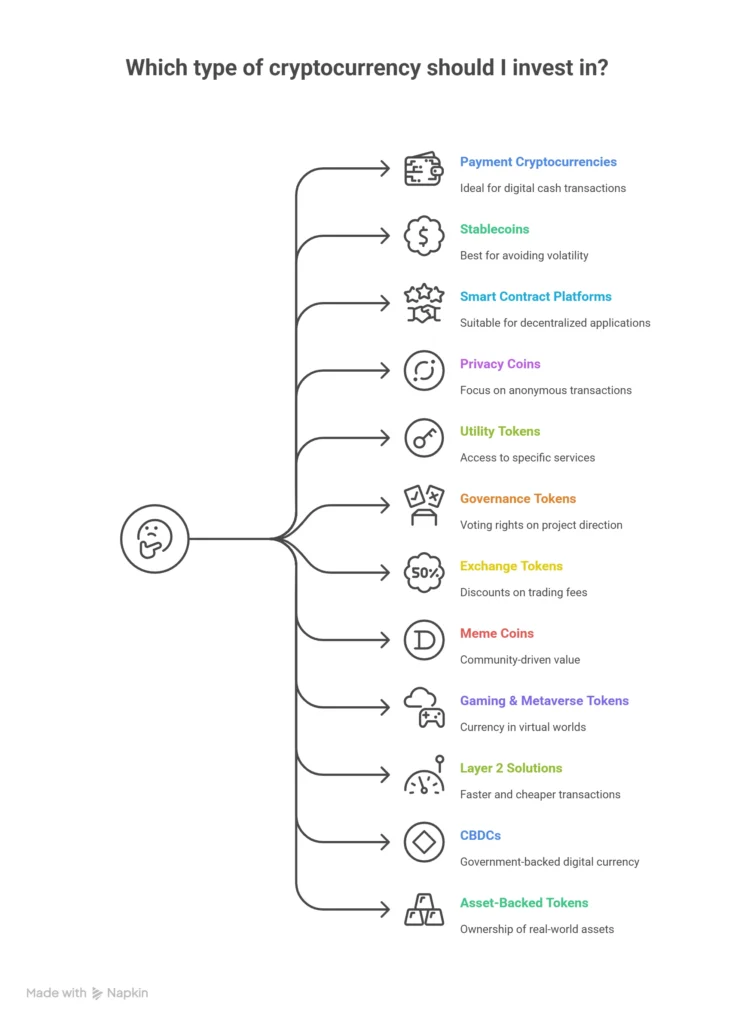
- Payment Cryptocurrencies: Designed to be used like digital cash. (e.g., Bitcoin, Litecoin).
- Stablecoins: Tied to a stable asset like the U.S. dollar to avoid volatility. (e.g., Tether, USDC).
- Smart Contract Platforms: Blockchains that can run decentralized apps (DApps). (e.g., Ethereum, Solana).
- Privacy Coins: Focus on making transactions anonymous and untraceable. (e.g., Monero, Zcash).
- Utility Tokens: Give users access to a specific product or service on a network. (e.g., Chainlink, Binance Coin).
- Governance Tokens: Allow holders to vote on the future direction of a project. (e.g., Maker, Aave).
- Exchange Tokens: Issued by exchanges to provide trading fee discounts. (e.g., Binance Coin, OKB).
- Meme Coins: Started as internet jokes but gained value through community hype. (e.g., Dogecoin, Shiba Inu).
- Gaming & Metaverse Tokens: Used as currency in virtual worlds and games. (e.g., The Sandbox, Decentraland).
- Layer 2 & Scaling Solutions: Help make major blockchains like Ethereum faster and cheaper to use. (e.g., Polygon, Arbitrum).
- Central Bank Digital Currencies (CBDCs): Digital currencies issued and backed by a country's government. (e.g., Digital Yuan).
- Asset-Backed Tokens: Represent ownership of a real-world asset like gold or real estate. (e.g., Paxos Gold).
The Story of Dead Cryptocurrencies
With millions of tokens being created, it's no surprise that most of them fail. Over 50% of all cryptocurrencies have failed. This is a critical point to remember when considering the total number of cryptocurrencies.
A project is considered “dead” if its developers have abandoned it, has extremely low trading volume, or was revealed to be a scam. The year 2021 saw the most failures, with over 5,700 projects dying off.
Here’s a breakdown of failed coins by the year they were launched:
| Year of Launch | Number of Dead Coins |
| 2017 | 346 |
| 2018 | 1,104 |
| 2019 | 1,154 |
| 2020 | 1,806 |
| 2021 | 5,724 |
| 2022 | 3,520 |
| 2023 | 289 |
This data shows that during market hype cycles (like in 2017-2018 and 2020-2021), a huge number of projects are launched, but most do not survive.
Crypto Users in 2025: Who Are They?
Cryptocurrency is no longer a niche hobby for tech enthusiasts. It has gone mainstream.
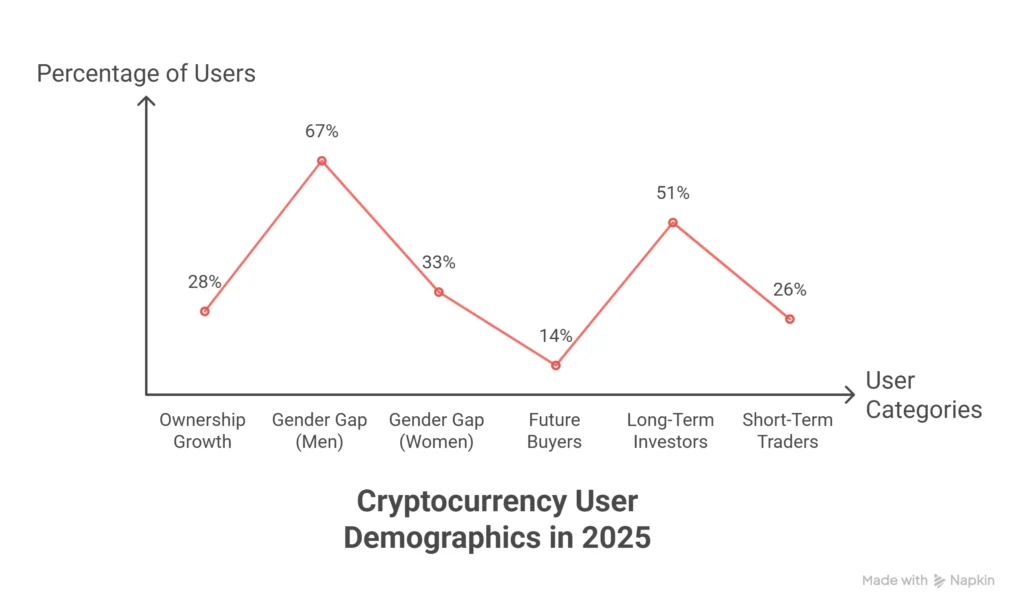
- Ownership is Growing: 28% of American adults now own crypto, up from just 15% in 2021.
- Gender Gap: Men still dominate the space, making up 67% of owners compared to 33% of women.
- Age: The median age of a crypto owner is 45.
- Future Buyers: 14% of people who don't own crypto plan to buy some in 2025.
- Investor Behavior: 51% of crypto users consider themselves long-term investors, while 26% are short-term traders.
What’s Coming in Crypto: Trends, Worries, and Politics
The crypto market never stands still. Here’s what to watch for in the coming years.
Common Crypto Concerns
Despite its growth, many people are still hesitant to invest. The top concerns include:
- Security: 59% of people lack confidence in the security of crypto.
- Volatility: 39% are worried about the unstable value of coins.
- Cyberattacks: 32% of current owners fear being hacked.
The Impact of Politics
In the U.S., the political climate is expected to play a big role.
- The Trump Effect: 60% of Americans familiar with crypto believe its value will increase under a Trump presidency.
- Government Regulation: Only 24% of people trust the government to regulate crypto effectively.
More Statistics to check out:
- Apple Music Statistics — Usage, Revenue & Marketshare
- Zoom Statistics— Growth, Active Users & Revenue
- Instagram Reels Statistics: Growth, Engagement & ROI
- YouTube Shorts Statistics: Users, Growth & Revenue
- Labubu Statistics: Growth, Revenue, and Market Dominance
- X (Twitter) Statistics: Active Users, Trends & Growth
- Gaming Statistics: How Many Gamers Are There ?
Frequently Asked Questions
❓How many cryptocurrencies have failed?
Over 14,000 listed cryptocurrencies have failed or become inactive since 2014. The real number, including unlisted tokens, is likely in the millions.
❓How many cryptocurrencies are there on CoinMarketCap?
CoinMarketCap tracks over 18,800 active cryptocurrencies.
❓How many cryptocurrencies are there on Coinbase?
Coinbase, being a more selective exchange, lists around 273 cryptocurrencies for trading.
❓Why do Bitcoin and Ethereum dominate the market?
Bitcoin was the first-ever cryptocurrency, giving it a huge head start and brand recognition. Ethereum was the first to introduce smart contracts, which became the foundation for DeFi, NFTs, and thousands of other tokens. Their long history, security, and massive networks make them the pillars of the crypto world.
Conclusion: Over 37 million cryptocurrencies exist as of 2025
So, what is the total number of cryptocurrencies? While the technical answer is over 37 million, the practical answer is that only a few thousand have any real substance.
The market is heavily concentrated, with giants like Bitcoin and Ethereum commanding most of the value and attention.
The ease of token creation has led to an oversaturated market, making it harder for investors to find valuable projects.
As the crypto landscape continues to mature, regulation and market forces will likely weed out weaker projects, and the focus will continue to shift from the sheer quantity of coins to the quality and utility they provide.
For investors, this means that research and caution are more important than ever.



